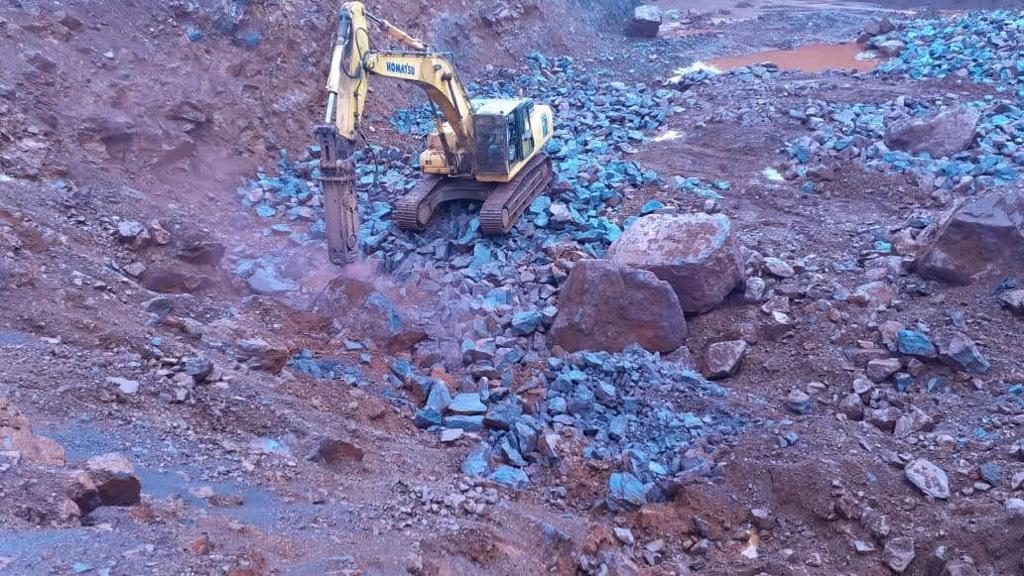Introduction
In an ever-evolving global economy, the demand for essential raw materials like iron ore plays a pivotal role in shaping industries and economies worldwide. In this article, we will delve into the intricate world of iron ore demand forecasting, examining the factors that drive this demand, the challenges it poses, and the strategies that businesses and investors can employ to navigate this dynamic landscape. Hence, let’s have a look at the ‘Iron Ore Demand Forecast”.
Understanding Iron Ore
Before we embark on our journey into forecasting demand, it’s crucial to grasp the fundamental aspects of iron ore. Iron ore is a mineral resource that serves as the primary raw material for the production of steel, a material integral to countless industries, including construction, automotive, and infrastructure development.
What Is Iron Ore?
Iron ore is a naturally occurring mineral consisting of iron oxides, primarily hematite and magnetite. These ores are extracted from the earth’s crust and processed into iron ore pellets or fines, which are subsequently used in steelmaking.
Factors Influencing Iron Ore Demand
To accurately forecast the demand for iron ore, it’s essential to consider various factors that contribute to its fluctuation.
Economic Growth and Industrialization
The demand for steel, and consequently iron ore, is closely linked to economic growth and industrialization. As countries develop and infrastructure projects expand, the need for steel rises, driving iron ore demand.
Global Infrastructure Projects
Large-scale infrastructure projects, such as bridges, highways, and high-rise buildings, rely heavily on steel, creating spikes in iron ore demand.
Technological Advancements
Technological innovations in steel production and efficiency can influence the demand for iron ore. Improved processes often result in reduced iron ore consumption.
Environmental Regulations
Increasing environmental regulations and the push for sustainable practices can affect iron ore demand by encouraging the use of alternative materials or more efficient production methods.
Iron Ore Demand Forecasting Methods
Accurately predicting iron ore demand is no easy task. Several methods and models are employed to forecast future demand, each with its strengths and limitations.
Historical Data Analysis
One common approach involves analyzing historical consumption patterns to identify trends and make future projections.
Supply and Demand Models
Supply and demand models take into account factors such as population growth, economic indicators, and industry-specific data to estimate future demand.
Market Research and Surveys
Market research and surveys provide valuable insights into consumer preferences and can help predict shifts in demand.
Challenges in Iron Ore Demand Forecasting
Forecasting iron ore demand is a complex endeavor, fraught with challenges and uncertainties.
Volatile Market Conditions
The iron ore market is susceptible to price fluctuations influenced by geopolitical events, supply disruptions, and changing trade policies.
Emerging Technologies
Advancements in material science and the development of new materials may disrupt traditional iron ore demand.
Environmental Concerns
Growing environmental awareness may lead to a shift away from steel-based construction, affecting iron ore demand.
Strategies for Businesses and Investors
Amidst the unpredictability of iron ore demand forecasting, businesses and investors can adopt strategies to mitigate risks and capitalize on opportunities.
Diversification
Diversifying investments across various industries can buffer against fluctuations in iron ore demand.
Sustainable Practices
Embracing sustainable and environmentally responsible practices can future-proof businesses in a changing market.
Continuous Monitoring
Regularly monitoring market trends and adjusting strategies accordingly is essential for staying competitive.
Conclusion
In a world where change is the only constant, understanding and forecasting iron ore demand is critical for businesses and investors alike. By considering the factors influencing demand, the methods of forecasting, and the challenges that lie ahead, stakeholders can make informed decisions that will shape the future of this essential industry.
Frequently Asked Questions (FAQs)
- What drives the demand for iron ore?
- Economic growth, industrialization, and infrastructure projects are key drivers of iron ore demand.
- How do environmental regulations impact iron ore demand?
- Stringent environmental regulations can encourage more sustainable practices and affect demand.
- What are the challenges in forecasting iron ore demand?
- Challenges include volatile market conditions, emerging technologies, and environmental concerns.
- What strategies can businesses use to navigate iron ore demand fluctuations?
- Diversification, sustainability, and continuous monitoring are effective strategies.
- Why is iron ore demand forecasting essential for investors?
- It helps investors make informed decisions and adapt to market changes
Signing Off.
You will love reading:
Iron Ore Geology: Unearthing the Secrets of a Vital Resource
Highest Iron Content in Different Iron Ores: Unearthing the Riches
Exploring the Origins of Iron Ore: Unraveling Earth’s Hidden Treasure
External Links:
Iron ore price expected to ease over next 5 years on slower demand growth and more supply

